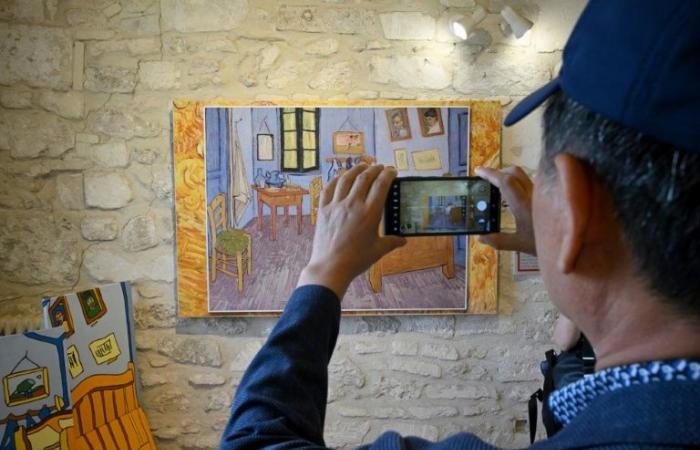“He arrived in this park on May 8, 1889. On the 9th, he painted two paintings, including the famous Irises”: psychiatrist of the “health center” where Vincent van Gogh was interned in Provence, Jean-Marc Boulon brought back to life for tourists and patients the tormented painter.
The high walls of this ancient monastery of Romanesque architecture in Saint-Rémy-de-Provence (southeast of France), parts of which date back to the 11th century and which was transformed into a hospital for the “insane” in 1807, still house a psychiatric clinic, “Saint-Paul”, today reserved for women for short stays.
But a wing of the building is open to visitors and 80,000 people per year come to admire “in real life” the settings of some of the most famous paintings by the Dutch painter (1853-1890), in the gardens where he painted, in addition to the “Iris”, the almond trees in flower, the olive trees or the foothills of the nearby Alpilles.
Van Gogh was interned there for 53 weeks, until May 16, 1890. He arrived from Arles, about thirty kilometers away, where he had lived for a little over a year, but where his mental state had deteriorated over time. of crises, including the one during which he cut off part of his ear.
Exasperated by his behavior, his Arles neighborhood even launched a petition demanding his removal or internment…
– “Unbelievable strength” –
“Acute mania with hallucinations of sight and hearing”, wrote the head doctor, Théophile Peyron, during his internment at the Saint-Paul health center.
“Crises favored by alcoholic excesses”, underlined Doctor Félix Rey, of the Arles hospital, whose portrait Vincent painted.
For Dr. Boulon, “it probably looks like bipolar disorder today.”
In Saint-Paul, “it is for Vincent a period of great initial suffering, then of recovery and well-being. We can observe it in his work, which is of incredible strength”, analyzes the practitioner.
An abundant work too, with 143 paintings and more than 150 drawings made during this stay.
A creative energy that Doctor Boulon strives to encourage in current patients, with the development since 1995 of art therapy workshops for patients and former patients.
Sylvie Fayolle, 56, hospitalized for ten weeks in 2010 for amnesia and depression, still returns there regularly, in the large room where half a dozen former patients paint or sculpt, with the help of an “art therapist” .
She likes to be in this “workshop that smells of Van Gogh”, installed near the old chapter house of the monastery. This creative process “is like a rebirth,” she smiles. And “van Gogh is a second dad”.
– “Very touching” –
“Without thinking that they are going to be van Goghs, it’s a role-playing game of identification. And that in life, to be creative and recognized when you think that you are no longer worth anything, is “that is to say the narcissistic revalorization and the restitution of the social bond, it is fundamental”, explains Doctor Boulon.
The patients’ works are thus exhibited, but also sold with 50% of the price going to the artist, in the cultural center installed in the part of the buildings open to visitors, around the cloister. A tribute to the wish expressed by Vincent, in a letter to his brother Théo, to found in the south of France an “association” of artists to “guarantee the possibility of existence and the work of its members”.
Visitors can also see a recreation of the room Van Gogh occupied, based on his descriptions of it in his letters.
And several additional rooms have just opened to the public, covering 500 square meters in total: reconstructions of a dormitory, the kitchen, the office of the chief doctor or the mother superior, as well as a restraint room, with straitjacket of period strength.
A visit that attracts tourists, like Killeen Doherty Rhodes, a 63-year-old American: “Seeing the room where he worked and made all his masterpieces is very touching.”
As is, she adds, “continuing this story for people who are here in situations similar to hers and getting help.”
so-vk/iw/fan






